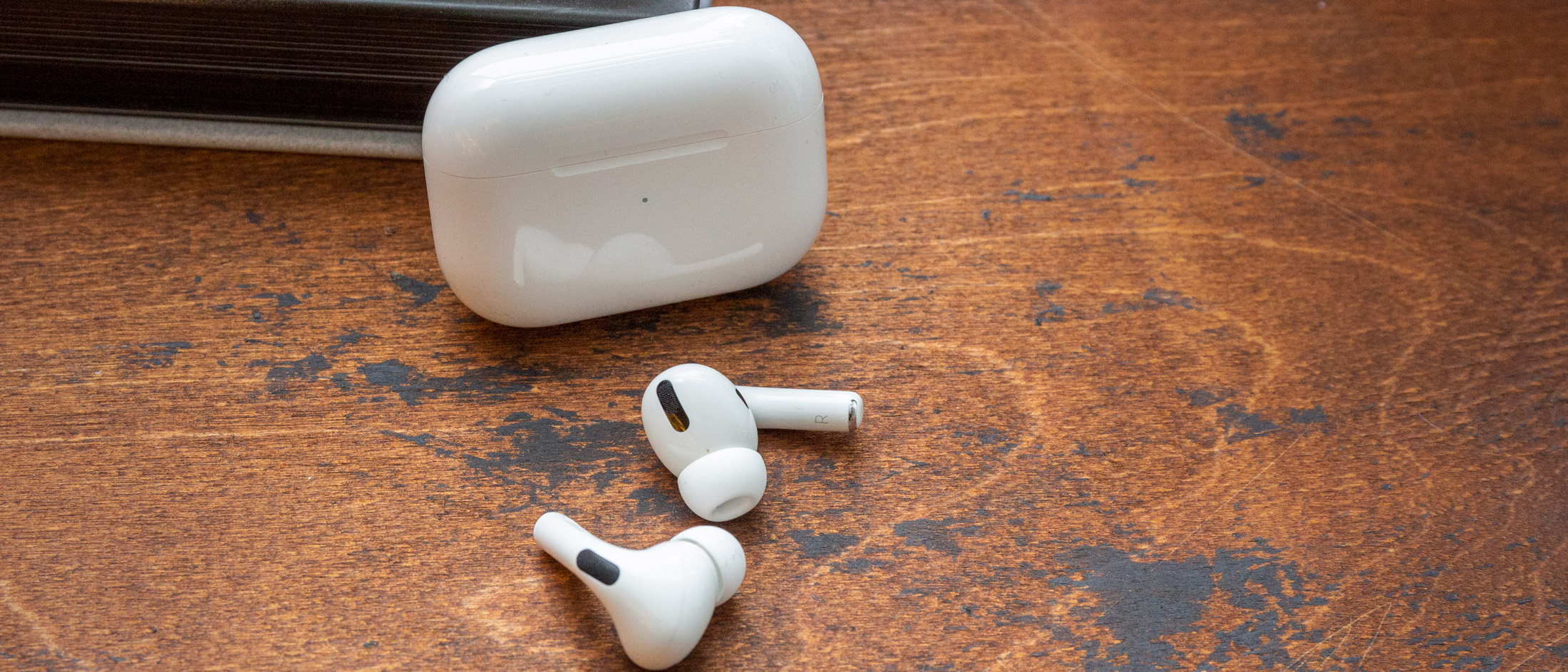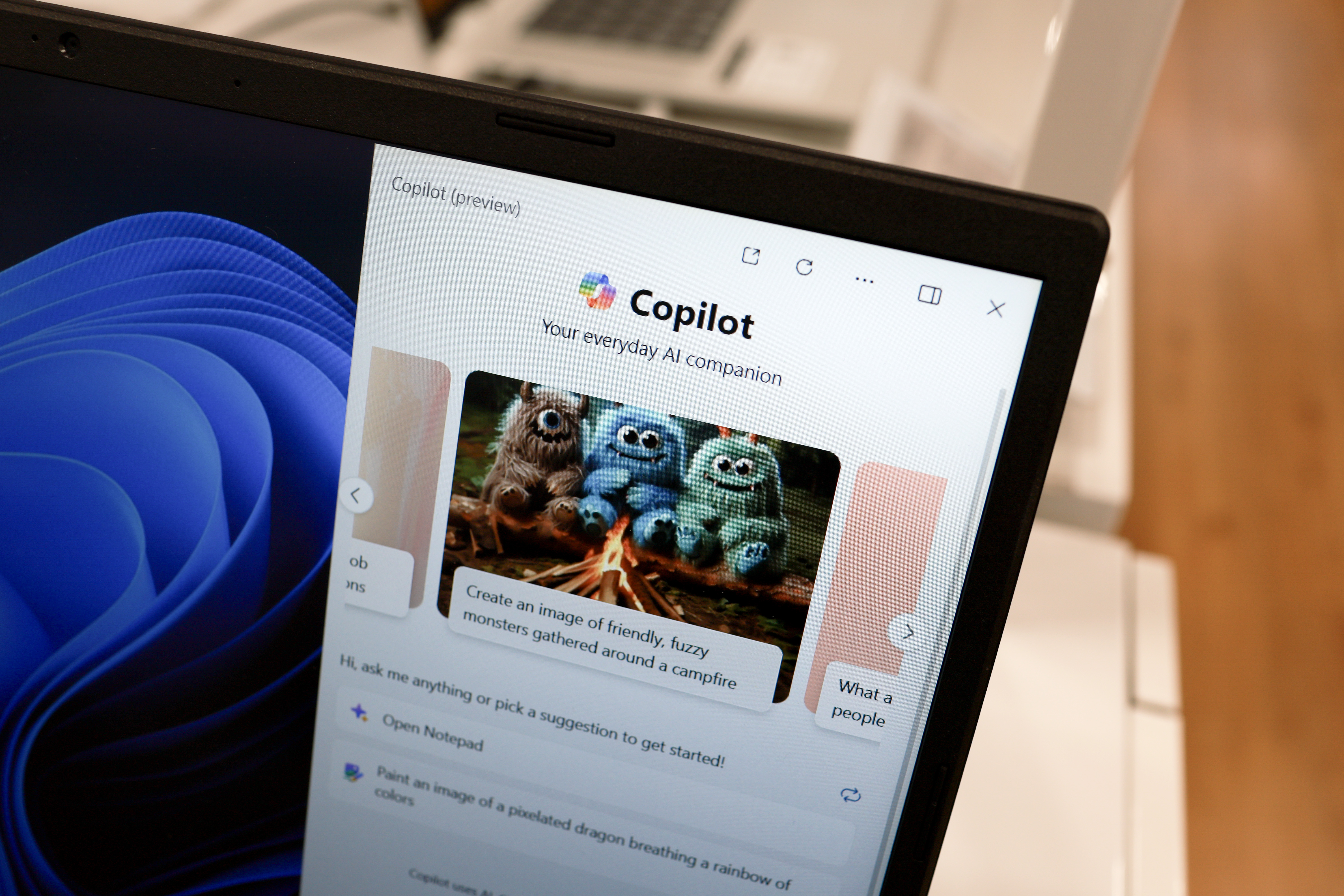Laptop Mag Verdict
With effective noise cancelling, good sound quality and a comfortable, sweat-resistant design, the AirPods Pro are the complete package.
Pros
- +
Extremely comfortable
- +
Seamless pairing
- +
Clear, balanced sound
- +
Decent noise cancellation
- +
IPX4 sweat resistance
Cons
- -
Not the best sound for the price
- -
Battery life could be better
- -
Pricey
Why you can trust Laptop Mag
AirPods remain the hottest thing in consumer audio, but that didn't stop Apple from releasing a new pair that is better in every way than its predecessor. The AirPods Pro ($250) cost $90 more than their siblings, but that extra cash gets you decent noise cancellation, sweat resistance, a more secure-fitting design and improved sound quality.
If you're looking for a pair of wireless earbuds and don't need the very best audio quality, then the AirPods Pro should be at the top of your list. They're definitely at the top of ours, landing a spot on our Best Noise-Cancelling Headphones page. If you already own the AirPods, then you don't necessarily need to upgrade — although you'll be glad if you do.
Apple AirPods Pro price and availability
The AirPods Pro cost $249, which is $90 more than the original AirPods with the regular charging case and $50 more than the version with a wireless charging case.
You can buy the AirPods Pro at major online retailers, including Amazon, Best Buy and Walmart, or directly from Apple.
What's in the box?
Apple ships the AirPods Pro with a wireless charging case, a Lightning-to-USB-C cable and silicone ear tips in three sizes (small, medium and large).
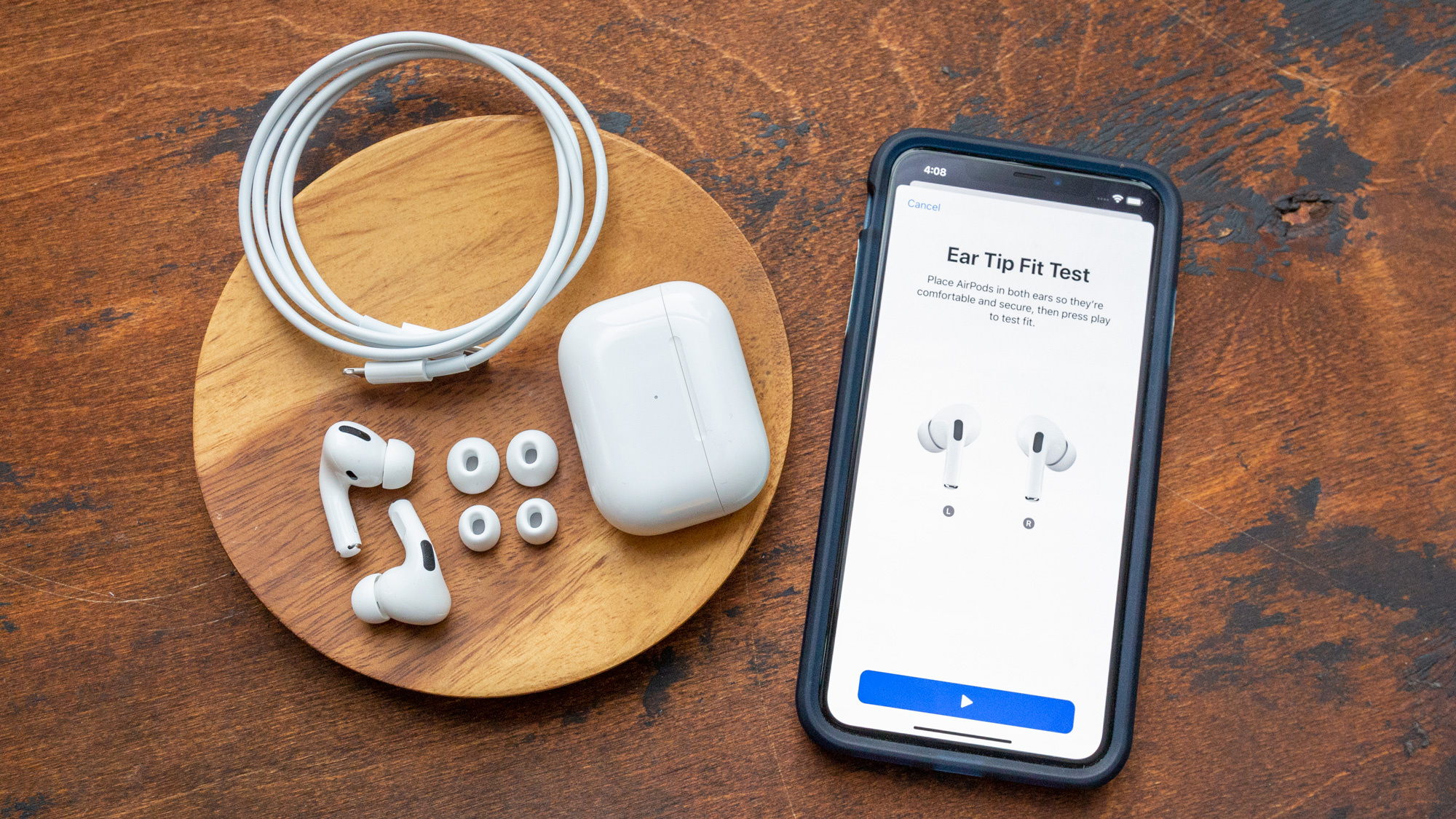
Design
The AirPods Pro have the same DNA as the AirPods but are improved in a few ways.
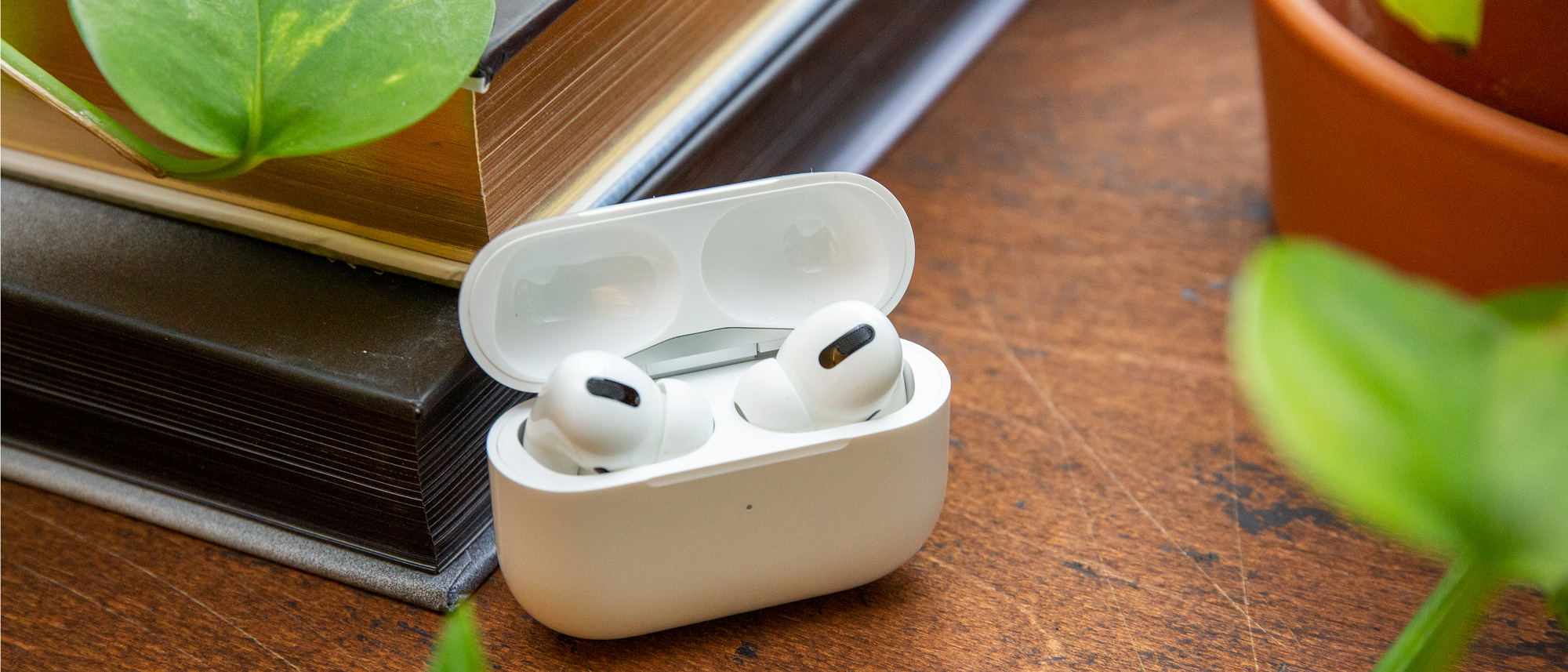
Subtle curves and a stark, white housing give the AirPods Pro a retro-futuristic aesthetic, while black mesh lines the microphones like KT tape on an athlete. The AirPods Pro have a larger housing than their cheaper sibling and a more ergonomic shape that improves comfort and keeps the earbuds securely in your ear (more on this below).
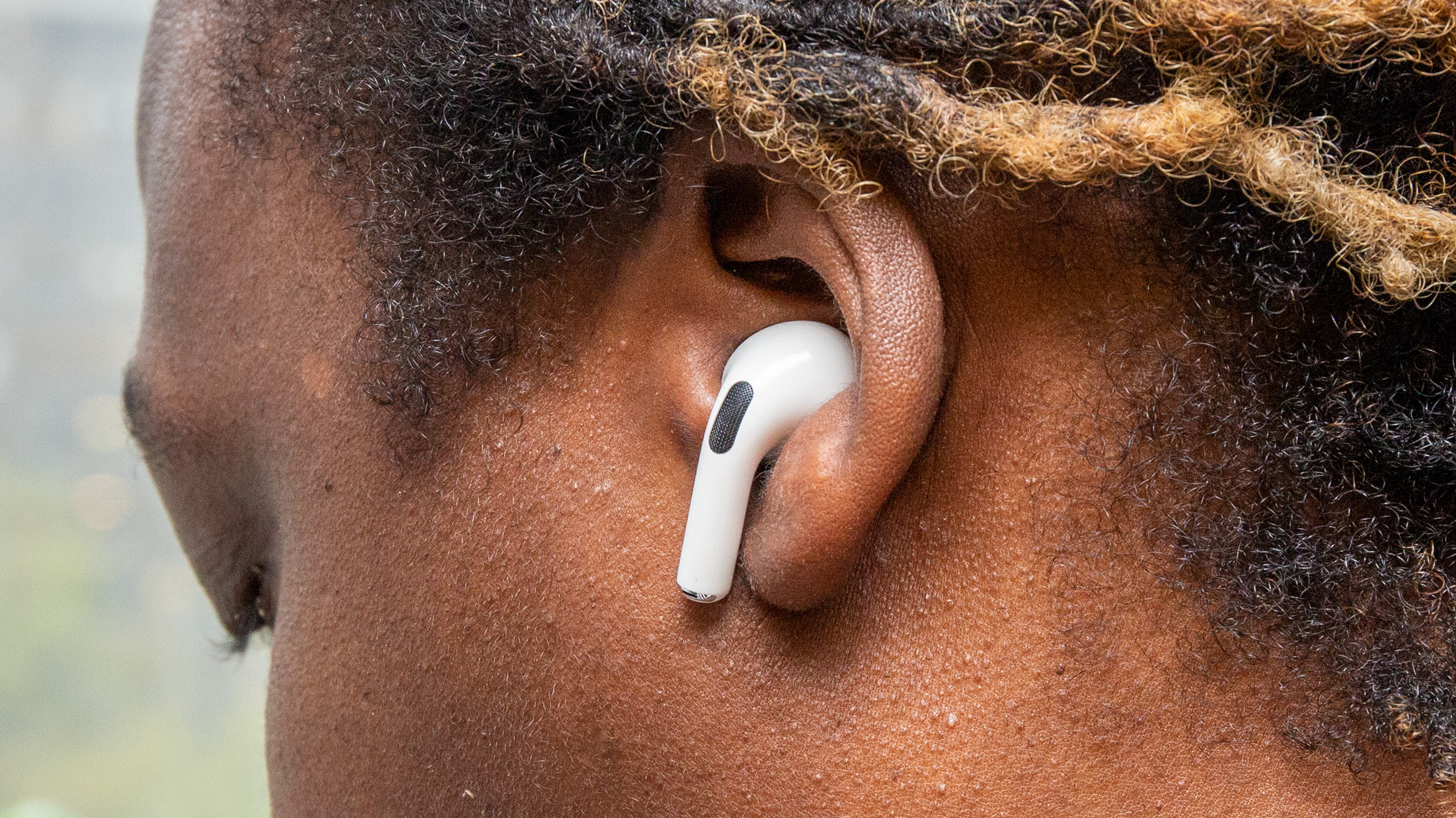
I also prefer how the AirPods Pro look compared to the cheaper models. Yes, the AirPods Pro are goofy looking, but the smaller stems don't stand out as much as those on the AirPods — not that it matters. As the original AirPods proved, if enough people wear something, no matter how awkward it appears at first, it starts to look normal. Between the new design (which looks decidedly less like a toothbrush head) and the AirPods' ubiquity, there is no reason to feel self-conscious about wearing the AirPods Pro around in public.

Apple essentially rotated the AirPods's charging case from portrait to landscape mode. It's still much smaller and lighter weight than competing cases, but it now looks less like a floss container. On the front of the case is a small LED battery indicator, and on the back is a pairing button. I like how the case stays open and closes with a satisfying snap.
Arguably the biggest improvement from the AirPods to the AirPods Pro is that the new buds offer IPX4 water- and sweat-resistance so you can use them in the gym.
Comfort
Don't worry: The AirPods Pro are every bit as comfortable as the original AirPods. You may have feared those silicon tips, but they won't dig into your ears like they do on traditional earbuds. Instead, the flat nozzles sit just outside your ear canal and let the silicon tips form a soft seal.
I even prefer the fit of the AirPods Pro over that of the original buds, because the new ones feel less prone to falling out. Instead of just dangling off your ears, the AirPods Pros' housing settled neatly into the groove of my ear with a simple twist. They didn't budge an inch when I headbanged like a rock star or used the elliptical at the gym.
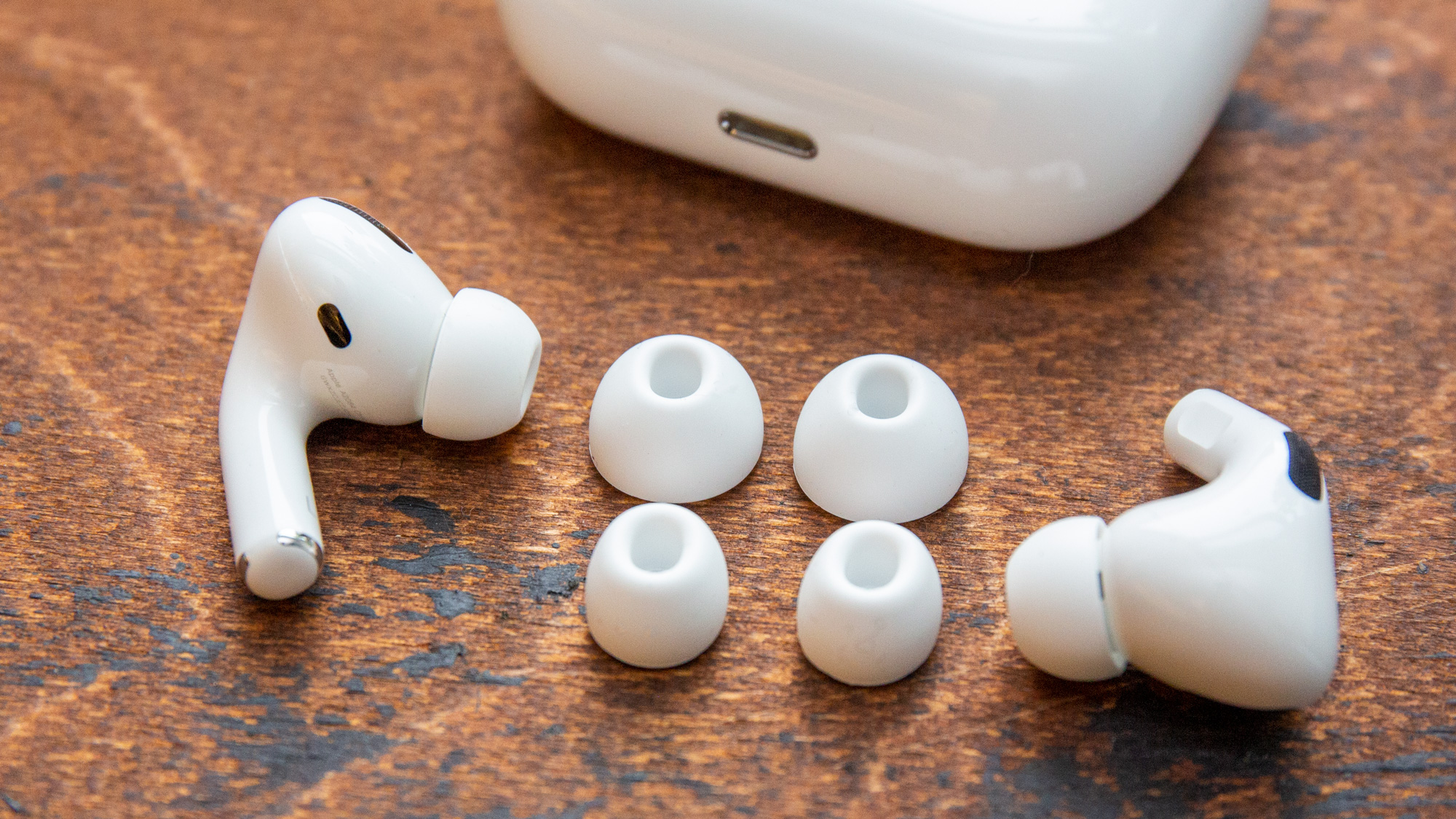
Apart from their unique shape, what makes the AirPods so comfortable is how lightweight they are. While a bit heavier than the AirPods, at 5.4 grams versus 4 grams, the AirPods Pro are very lightweight, so, for better or worse, you'll quickly forget you're wearing them.
Controls
Touch controls on competing earbuds can be finicky, and physical controls require you to push a button that can drive the buds into your ear canals. Apple's clever solution to this conundrum relies on the stems on the AirPods Pro.
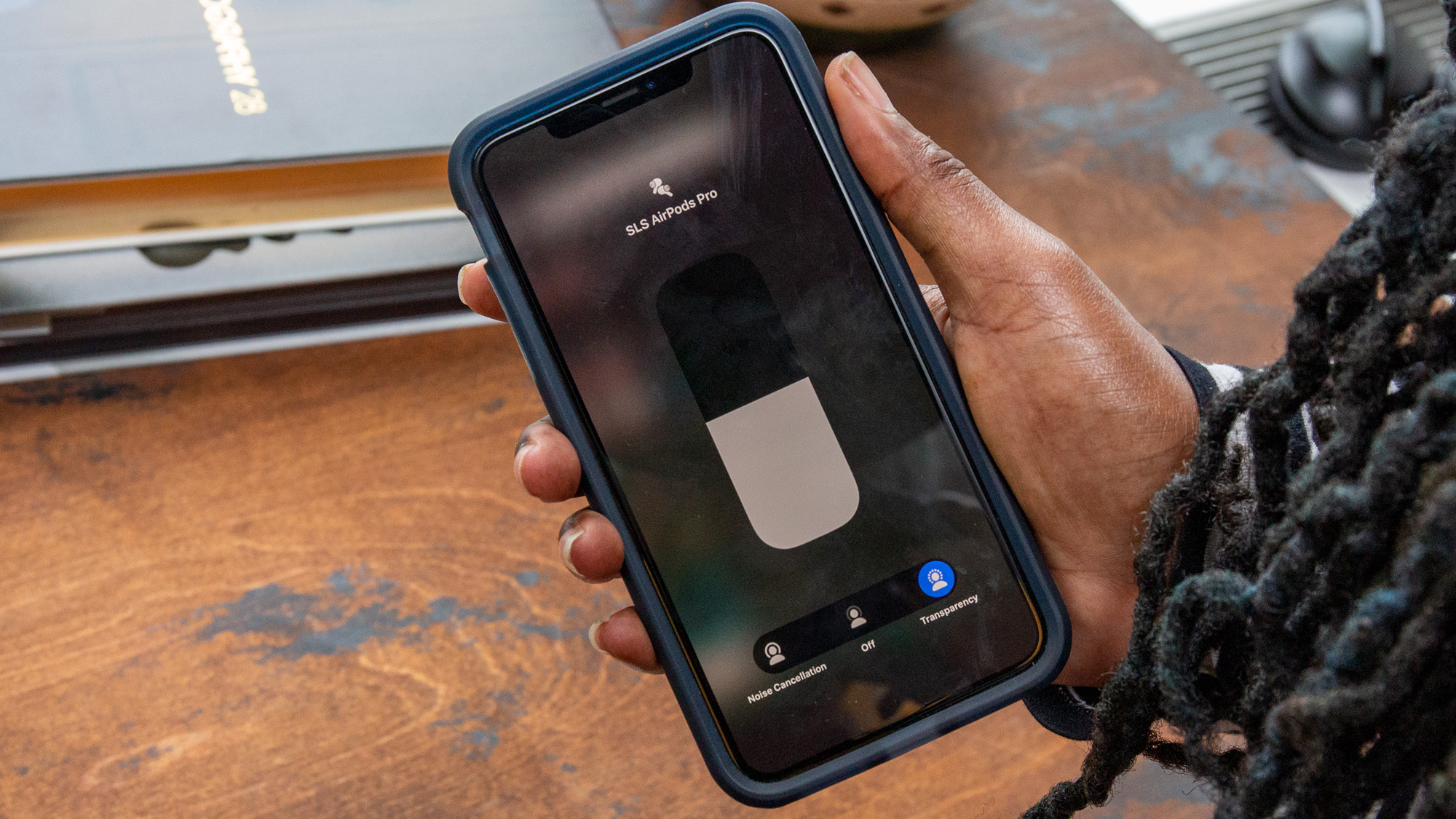
Instead of tapping a touch sensor, you control the AirPods Pro by squeezing a "force sensor" on their stems.
The new system works brilliantly. Squeezing the stems once played music; when my tunes were playing, that squeeze paused the music so I could chat with a colleague. The same action also answers calls. By double squeezing, you can skip to the next track, while a third squeeze will take you the previous song. Squeeze and hold the stem, and you can switch between noise-cancelling and transparency modes.
I thought there would be more of a learning curve, but I executed each of the desired controls on the first try.
MORE: Best Tech for Travel
That said, there are some annoying limitations that I hope Apple addresses in an update or in future versions. My biggest complaint is that you can't control volume levels directly from the AirPods Pro. If you want to turn down or crank up your music, you'll have to do so from your smartphone or with Siri.
Noise-cancelling and transparency mode
The AirPods Pro feature active noise cancellation, which uses outward- and inward-facing microphones to detect unwanted sounds and counter them with "anti-noise." The noise reduction works well, but does it justify the price gulf between the AirPods Pro and the AirPods? That depends.
If you plan on taking them on flights, then the AirPods Pro should do a good job of muffling the low roar of a plane engine. They won't, however, save your ears from the baby crying in the seat next to you.
The AirPods Pro did a good job of silencing onlookers encouraging New York City Marathon runners outside my home. But these buds were no match for the viewers' applause when I left my apartment and joined the festivities.
I had mixed results in the office. The earbuds completely eliminated the low hum of our building's HVAC, but I could clearly hear talkative colleagues and the clacking of a nearby mechanical keyboard with music playing at low volume levels. Similarly, the AirPods Pro quieted my morning commute from Manhattan to Brooklyn, but I still had to play music at 75% volume to overcome the screeching of an old F train.
MORE: Best Noise-Cancelling Headphones | Laptop Mag
With that in mind, don't expect the level of noise reduction that you get from over-ear headphones, like the Bose Noise Cancelling Headphones 700.
What I love most about the noise-cancelling feature is how seamlessly it works. Just put the AirPods into your ears, and sounds are automatically reduced when a proper seal is detected. On average, there was less than a second delay between the time I inserted the earbuds and when the ANC turned on.
Don't want to block out the world around you? The AirPods Pro have you covered, with Transparency mode. When this is enabled, the earbuds let in ambient sounds so that you hear your surroundings as if you weren't wearing earbuds. The feature is great for runners or people living in cities who want to be aware of the traffic around them.
My Sony WH-1000XM3 headphones have a similar feature, which I regularly use when ordering drinks on a flight or chatting with my colleagues while listening to music.
Pairing and audio sharing
The H1 chip inside the AirPods Pro makes pairing to your iPhone effortless. To connect the earbuds, I needed only to open the AirPods Pro case and press Connect when a pop-up menu appeared on my iPhone 8 Plus.
To pair to a Mac or non-Apple device (an Android phone or a Windows PC), you press and hold the setup button on the back of the AirPods Pro case and connect via the respective device's Bluetooth settings.
Audio Sharing is a fun iOS 13 feature that lets you share audio to multiple pairs of AirPods or compatible Beats products. That way, you and a friend can listen to the same song simultaneously. You can think of Audio Sharing as an invisible headphone splitter. In practice, the feature worked exactly as I had hoped.
Once I paired the AirPods Pro and the Beats Solo Pros to an iPhone 8 Plus running iOS 13, a new icon appeared on the volume adjuster within the Control Center. When I tapped the icon, it linked the two sets of headphones, so whatever music was playing on the iPhone 8 Plus would come out of both sets. Audio Sharing is compatible with any headphones or earbuds with an H1 or W1 processor; that includes the AirPods, AirPods Pro, Beats Solo Pro, Powerbeats Pro, Studio3 Wireless, BeatsX, Powerbeats3 Wireless and Solo3 Wireless.
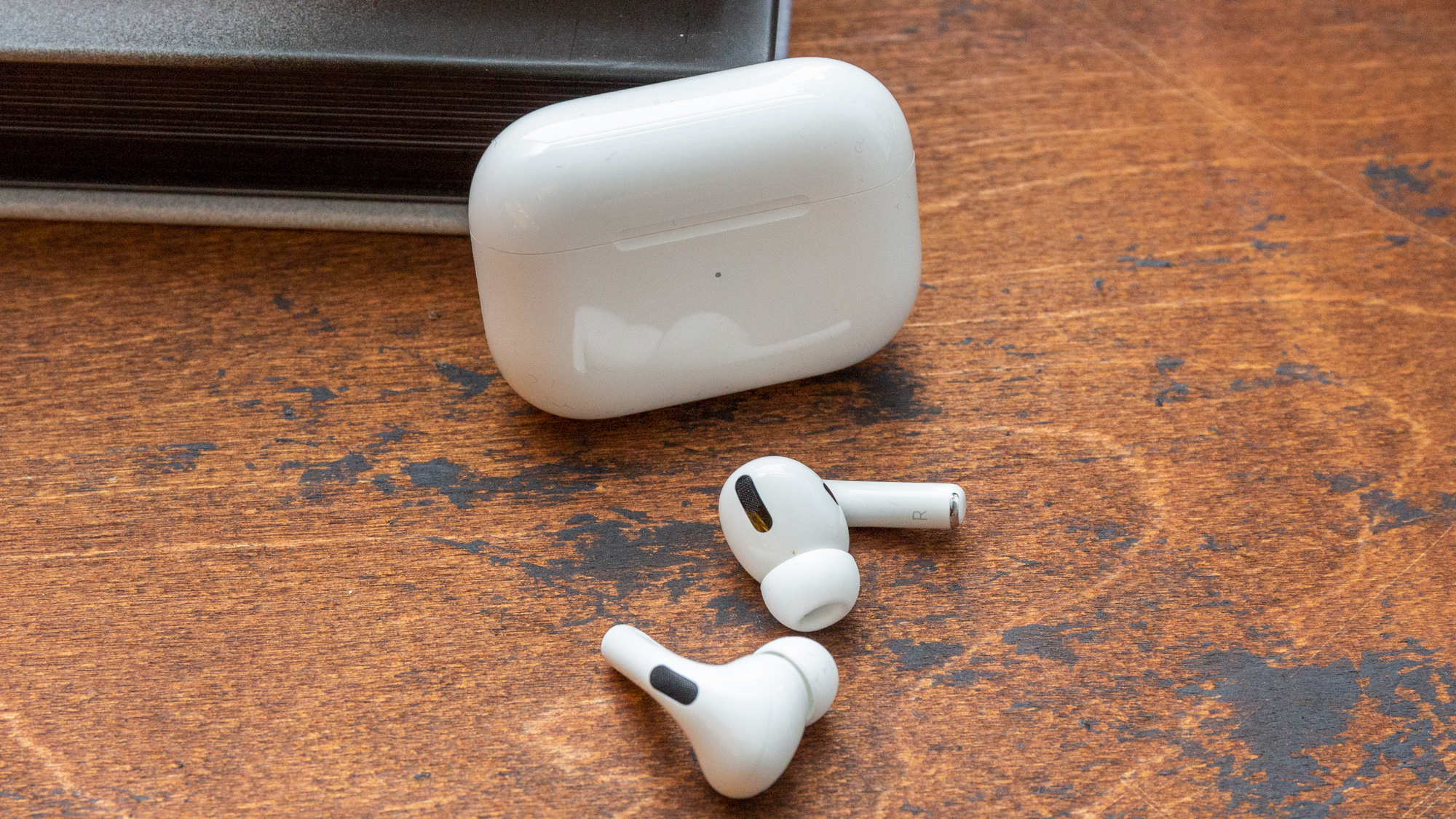
Audio quality
The AirPods Pro sound very good. Competing wireless earbuds at this price, like the Sennheiser Momentum, offer better sound quality, but the balance and clarity on the AirPods Pro should please most listeners.
I started my test by listening to Daughter's "Youth," which sounded crisp and clear through the AirPods Pro. I was even impressed by the impact of the drums when they kicked in after the first chorus. Those low-frequency notes were meatier but muddier on the Momentum True Wireless. Despite the loose bass, the Sennheiser buds' wider soundstage and more-intimate vocals put it ahead of the AirPods Pro on this track.
The AirPods Pro handled the complicated arrangement of instruments in Glass Animals' "Youth" well. The drums, guitars and synthesizers were nicely separated, and Dave Bayley's delicate vocals sounded crisp. I even enjoyed the low end, until I switched to the Momentum True Wireless and heard the sweet sound of a deep, controlled bass slamming into my ear. The AirPods can't reach the same depths.
Julien Baker's emotive vocals were airy and well defined when I listened to "Blacktop" using the AirPods Pro. I heard the twang of the acoustic guitar, but that sound never detracted from the singer's delicate voice. The heavier, deeper reverb of the acoustic guitar on the Momentum Wireless crept into the vocals more than I would have liked. At the same time, the deep seal you get on the Momentums allowed for a more intimate, forward presentation that work really well with the acoustic ballad.
MORE: How to Snap iPhone Pictures with Your Apple EarPods
Because of their shallow insertion, the AirPods Pro have a laid-back sound signature compared to the Momentum's closer and more dynamic sound. The Momentums were also louder than the AirPods Pro throughout my testing.
Call quality
The AirPods Pro get the job done but don't break any barriers on call quality. My colleague said I sounded loud but muffled when I talked to him through the AirPods Pro's built-in microphones.
Although though my voice wasn't very clear, the AirPods Pro sounded better than the Amazon Echo Buds and the Sony WF-1000XM3 when my colleague called me outside of our New York City office and switched between the three buds. The AirPods Pro also did a decent job blocking out ambient sound, although we had to wait for an ambulance and bus to pass by before continuing our conversation.
Battery life, charging and Bluetooth connectivity
Apple rates the AirPods Pro's battery life at 4.5 hours for the earbuds, which is just 30 minutes shorter than the regular AirPods' runtime. The case charges the AirPods Pro five to six times before the case needs to be recharged, which brings the battery life of the pair up to 24 hours.
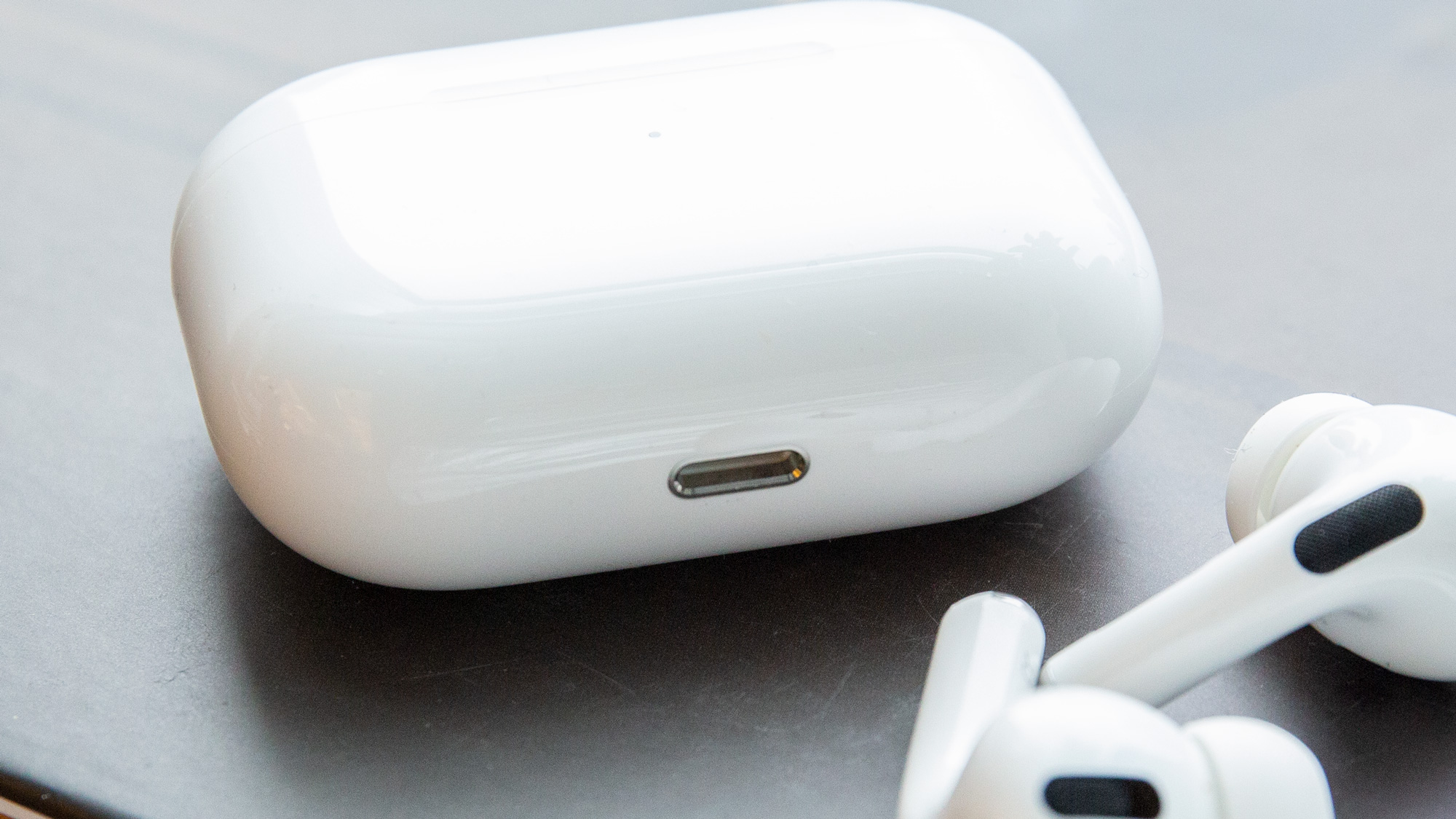
I got about 4 hours out of the AirPods Pro listening to music and streaming videos with ANC turned on before the buds showed me a notification for low battery life.
That's a decent result, but there is certainly room for improvement. Other wireless, noise-cancelling earbuds last for several hours longer on a charge. That includes the WF-1000XM3 (6 hours, 24 hours with case) and the Master & Dynamic MW07 Plus (10 hours, 40 hours with case).
MORE: What is Bluetooth 4.0? Bluetooth Smart and Smart Ready Explained ...
When power runs low, you can pop the AirPods Pro into their charging case and get 1 hour of listening time from just 5 minutes of charging. Unfortunately, the case uses Apple's proprietary Lightning input, not the universal USB-C port.
The AirPods Pro employ Bluetooth 5, the latest standard, which offers fast transfer speeds, longer battery life and a theoretical range of up to 800 feet. In practice, the AirPods Pro kept a steady connection with my OnePlus 6 smartphone when I walked to the other side of the office, but they cut out once I rounded a corner and put a wall between the earbuds and phone.
Bottom line
The AirPods Pros are better than the AirPods in almost every way.
The new sweat-proof design looks better and fits more securely in your ear, sound quality has been slightly improved, and the highlight feature — active noise cancellation — effectively reduces ambient sounds (just don't expect a miracle). Add everything we loved about the original AirPods — seamless pairing, a strong Bluetooth connection and supreme comfort — and we have no reservations naming the AirPods Pros the best wireless earbuds available today.
But that could soon change. Battery life and sound quality are areas where rival earbuds already top the AirPods Pro. If Sennheiser, Sony, or Master & Dynamic can close the gap in other areas, then they'll put up a serious fight against Apple's buds. Until then, the AirPods Pro are a must-buy for iPhone users (who have $250 on hand) and a strongly recommended pair of earbuds for everyone else.
Phillip Tracy is the assistant managing editor at Laptop Mag where he reviews laptops, phones and other gadgets while covering the latest industry news. After graduating with a journalism degree from the University of Texas at Austin, Phillip became a tech reporter at the Daily Dot. There, he wrote reviews for a range of gadgets and covered everything from social media trends to cybersecurity. Prior to that, he wrote for RCR Wireless News covering 5G and IoT. When he's not tinkering with devices, you can find Phillip playing video games, reading, traveling or watching soccer.
